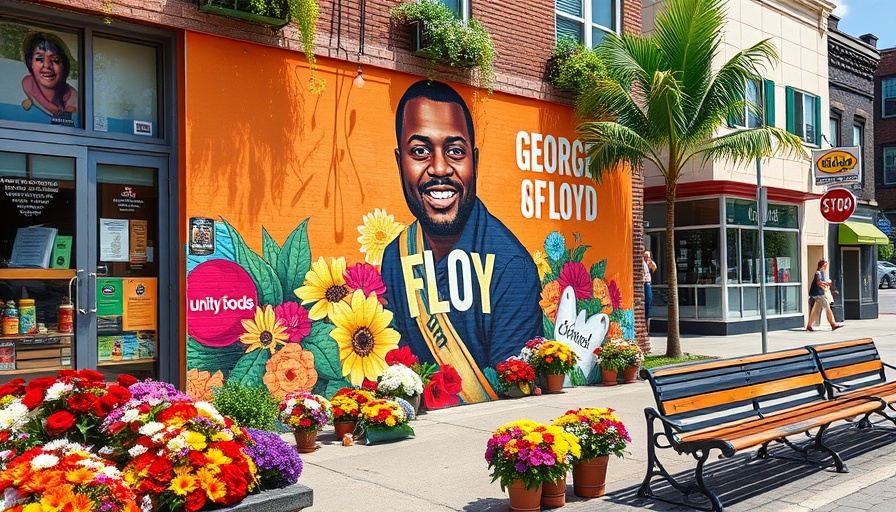
Revisiting the Legacy of George Floyd Five Years Later
On May 25, 2025, five years after George Floyd's tragic murder at the hands of police in Minneapolis, significant reflections emerge about how the media narrative surrounding his death and ensuing protests has evolved. Initially portrayed through a lens of violence and disorder, today’s coverage provides critical insights into the complex dynamics of social movements and their representation in the public eye.
Understanding the Initial Media Response
When details surrounding Floyd's death surfaced, local authorities were quick to downplay the events, misleadingly claiming he died from a pre-existing medical condition. However, video evidence released by bystander Darnella Frazier radically shifted this narrative, revealing the police's excessive use of force. This footage mobilized protests, marking the beginning of what many consider the largest movement against racial injustice in U.S. history.
Despite the movement's magnitude and significance, media coverage during and immediately following the protests largely focused on allegations of lawlessness and violence. This focus not only skewed public perception but also reinforced what scholars call the “protest paradigm.” This paradigm tends to depict protests more as chaotic riots rather than legitimate expressions of community anguish and demands for justice.
Shifting Narratives: Reflection Over Reaction
As we approach the fifth anniversary of Floyd's murder, there appears to be a noticeable shift in narrative. While sensational stories of violence occasionally resurface—like The New York Post's recent portrayal of Minneapolis—much of the current media discourse emphasizes the need for reflection. The change signifies an opportunity to delve deeper into the genuine calls for reform and examine the persistent grief within communities.
The evolution of media discourse can provide a clearer understanding of the intricacies involved in protests against systemic racism and police brutality. It highlights how societal change often entails grappling with narratives that both uplift and diminish the voices of marginalized communities.
Protests in Context: Learning from the Past
The relationship between media narratives and protest movements is critical. The way in which news outlets cover events can significantly influence the public’s perception and the eventual impact of these movements. It is crucial for the media to move beyond simplistic depictions of protests, which often obscure the genuine concerns driving these actions.
For instance, scholars note that news media historically emphasize sensational or disruptive elements of protests, which can distract from their underlying messages. Considering this, continued scrutiny of media practices remains vital in ensuring that the voices of protesters are heard and understood rather than dismissed.
Future Predictions: A Need for Responsible Journalism
The lessons learned from the aftermath of George Floyd's murder underscore the importance of responsible journalism in shaping societal discourse. As media narratives continue to evolve, it is essential for news outlets to strive for balance, highlighting not only the tensions inherent in protests but also the profound grief and sense of urgency prompting these actions.
As we reflect on the past, we must also consider how the media's portrayal of social movements might inform future coverage. There's a need for responsiveness and a broader understanding of the complexities faced by communities as they seek justice.
Conclusion: Owning Our Stories
Five years post-Floyd, the dialogue surrounding his murder and its aftermath is more critical than ever. Media narratives shaped during a transformative time provide us not only with insights into public perception but also urge us to reassess our responsibilities in reporting on social justice issues. By amplifying the voices of those advocating for change and standing against oppression, we can all contribute to a greater understanding of the fight for equality.
 Add Row
Add Row  Add
Add 




 Add Row
Add Row  Add
Add 

Write A Comment